Abstract
Developing and deploying informatics solutions which are useful and acceptable to busy physicians are challenging tasks. We describe the design, deployment, and evaluation process by which the delivery of routine clinical laboratory reports is automated using electronic mail. Data from TMR, an operational computer-based patient record (CPR), are presented to providers using an individualized, modern interface. This system is compared to the existing, paper-based system for delivery of data from the same CPR. Differences between the two systems of data delivery are analyzed, with emphases on 1) electronic documentation of data delivery and receipt, 2) electronic and/or paper documentation of clinical action taken as a result of laboratory reports, 3) timeliness of report availability, 4) costs, 5) workflow compatibility, and 6) physician satisfaction. The new delivery system employs inexpensive, commercially available software applications and entails only trivial changes to the proprietary CPR. Built into the new system are features which allow quantitative measurements of its performance for analysis along with survey-based user satisfaction data. The open systems design is deliberately non-proprietary, inexpensive, and generalizable. Accordingly, it offers practical possibilities for settings in which clinical information systems are just being planned, as well as for those in which such systems are already established.
Full text
PDF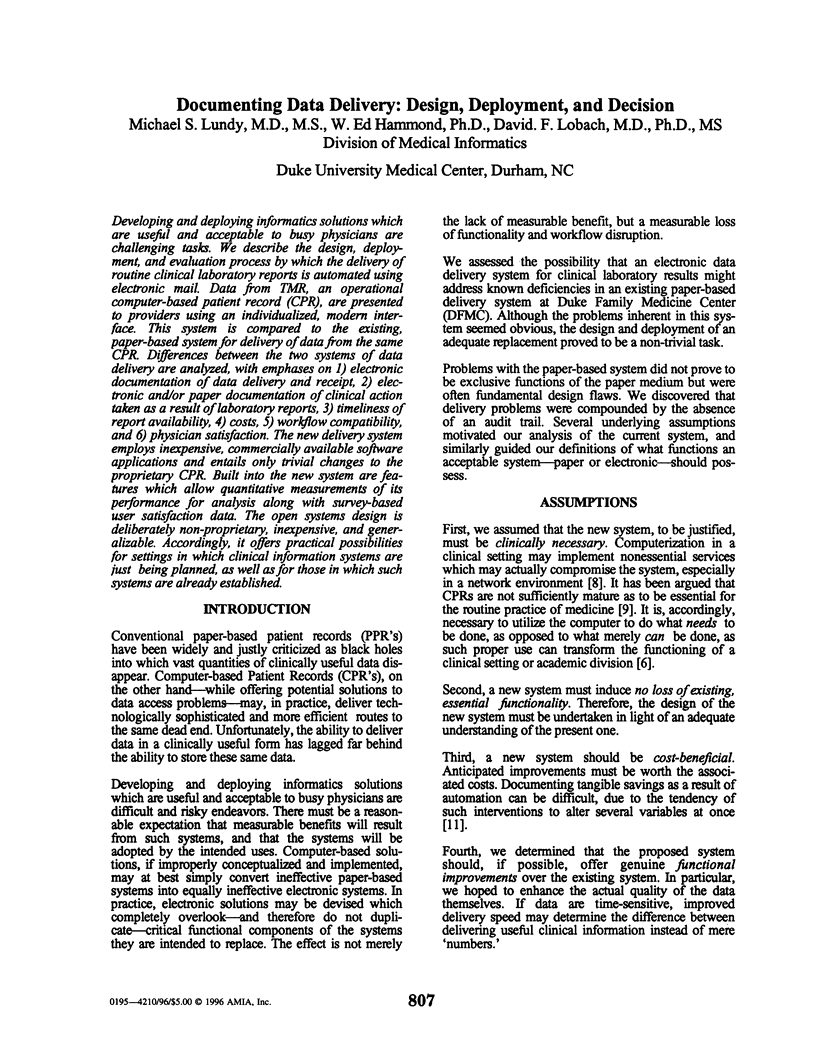
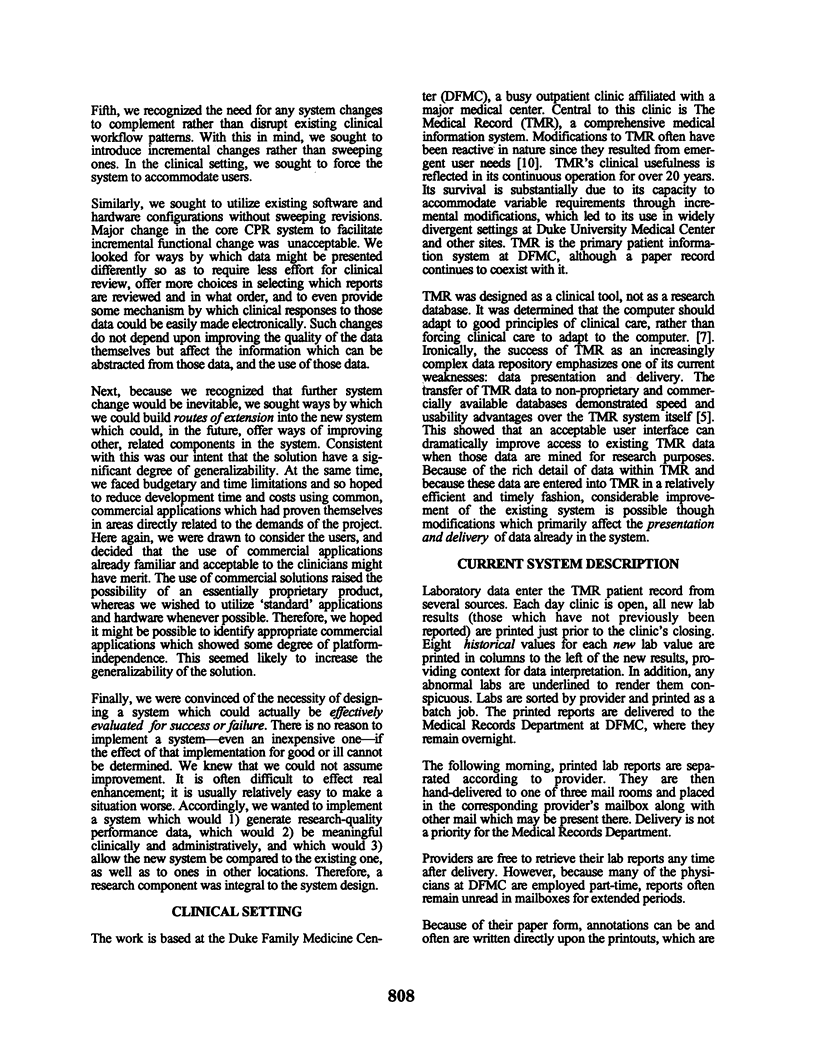
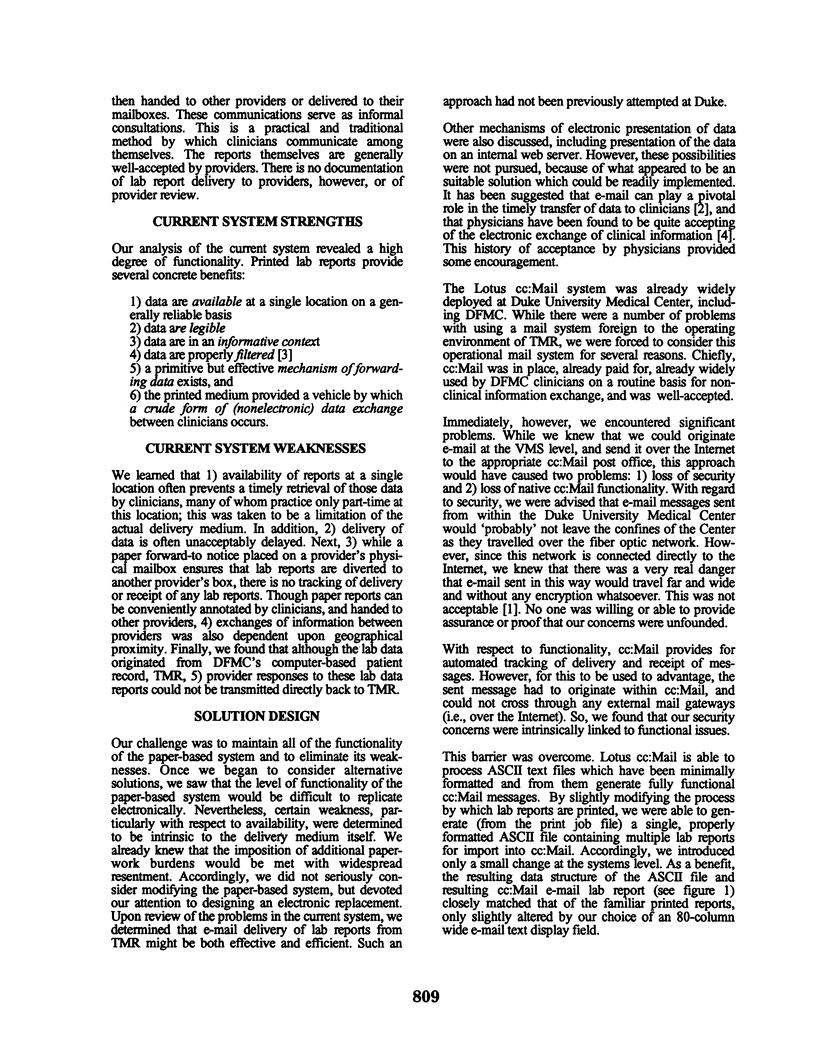
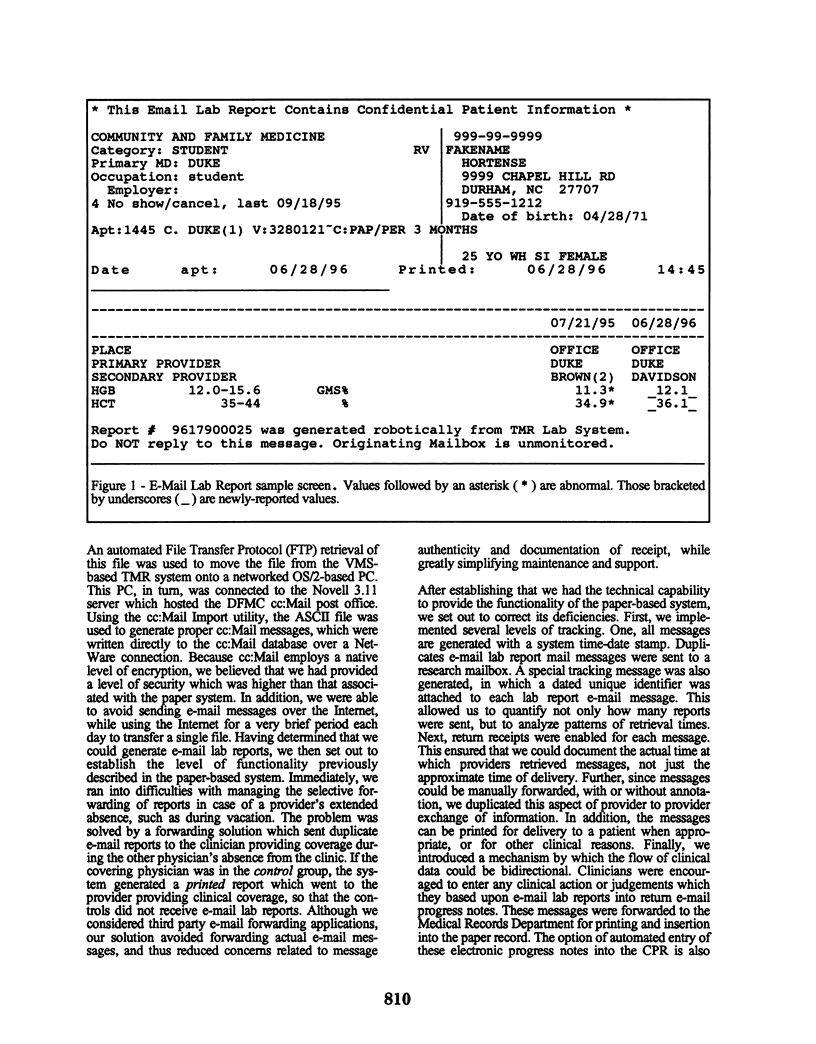
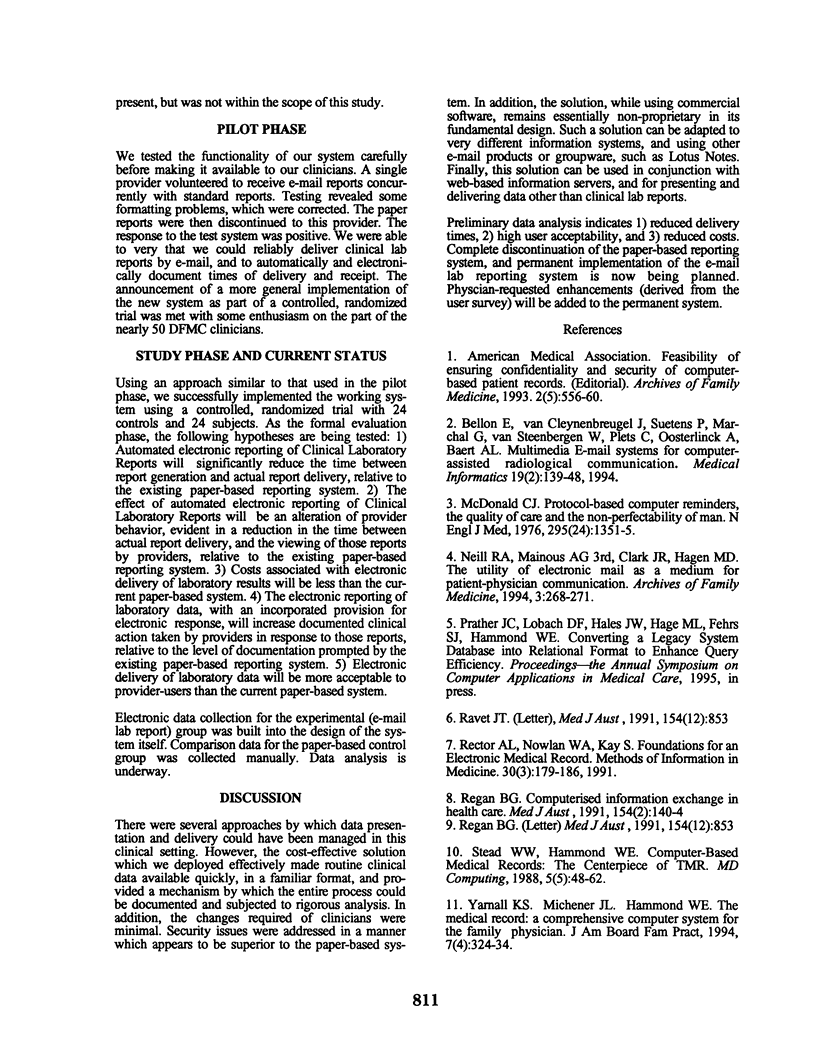
Selected References
These references are in PubMed. This may not be the complete list of references from this article.
- Bellon E., van Cleynenbreugel J., Suetens P., Marchal G., van Steenbergen W., Plets C., Oosterlinck A., Baert A. L. Multimedia E-mail systems for computer-assisted radiological communication. Med Inform (Lond) 1994 Apr-Jun;19(2):139–148. doi: 10.3109/14639239409001381. [DOI] [PubMed] [Google Scholar]
- McDonald C. J. Protocol-based computer reminders, the quality of care and the non-perfectability of man. N Engl J Med. 1976 Dec 9;295(24):1351–1355. doi: 10.1056/NEJM197612092952405. [DOI] [PubMed] [Google Scholar]
- Neill R. A., Mainous A. G., 3rd, Clark J. R., Hagen M. D. The utility of electronic mail as a medium for patient-physician communication. Arch Fam Med. 1994 Mar;3(3):268–271. doi: 10.1001/archfami.3.3.268. [DOI] [PubMed] [Google Scholar]
- Rector A. L., Nowlan W. A., Kay S. Foundations for an electronic medical record. Methods Inf Med. 1991 Aug;30(3):179–186. [PubMed] [Google Scholar]
- Regan B. G. Computerised information exchange in health care. Med J Aust. 1991 Jan 21;154(2):140–144. [PubMed] [Google Scholar]
- Stead W. W., Hammond W. E. Computer-based medical records: the centerpiece of TMR. MD Comput. 1988 Sep-Oct;5(5):48–62. [PubMed] [Google Scholar]
- Yarnall K. S., Michener J. L., Hammond W. E. The medical record: a comprehensive computer system for the family physician. J Am Board Fam Pract. 1994 Jul-Aug;7(4):324–334. [PubMed] [Google Scholar]


